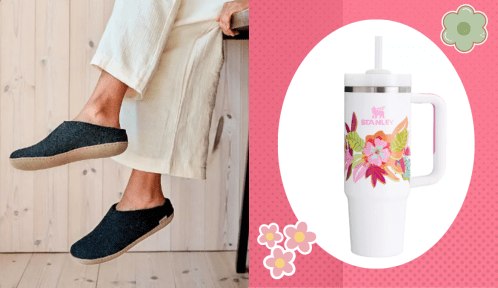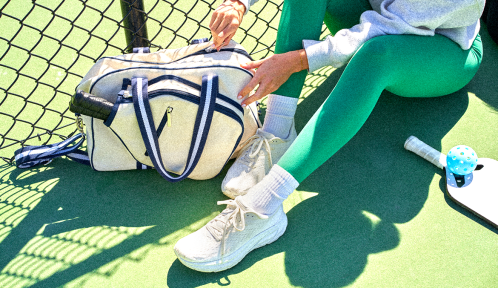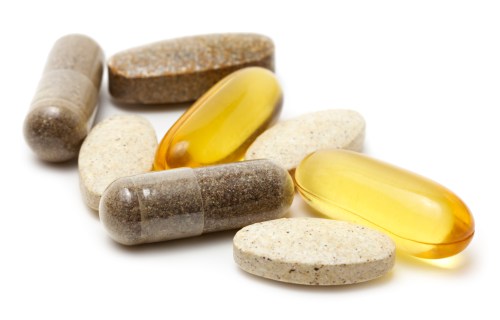Our editors independently select these products. Making a purchase through our links may earn Well+Good a commission
At first blush, it might seem easy to justify rarely washing your bathroom hand towels. After all, they tend to be far from food or dirt, and they’re generally used to dry clean things, like a just-washed face or hand. Maybe you’ve even rationalized that “it’s just my germs, anyway,” if your hand towel isn’t being shared. But, if you dig deeper, you’ll find that regardless of how many people use it and for which body parts, a hand towel can most definitely be a breeding grounds for bacteria—and that reality should certainly factor into how often you wash your hand towels.
Experts in This Article
microbiologist and author of The Germ Files
chief cleaning officer at MaidPro
To be clear, if you were trying to remove the possibility of any bacterial or fungal growth on a bathroom hand towel you use a couple times a day, you’d want to wash it (or swap it out) close to every day. But according to microbiologist Jason Tetro, that’s not really necessary, nor is it likely realistic or sustainable to do.
Based on the levels of microbes that can grow on towels, it’s reasonable to aim for washing them once a week, he says. “Studies looking into the microbial contamination of towels have revealed that they can grow into the hundreds of thousands within that time frame,” he says. “This may be enough to transfer back to your skin and lead to either odor or possible infection.”
Why it’s important to wash your bathroom hand towels once a week
Even if your hand towel never comes into contact with makeup, skin-care products, toothpaste, or anything else besides water—all of which could cause gunky buildup and signal a need for a wash—it’s still existing in an environment that allows for household germs to proliferate on its surface. “Bacteria and fungi need three things to grow,” says Tetro. “One is humidity, of which there’s plenty in a bathroom. Two is food, which comes in the form of skin secretions and dead skin cells [which pass to a towel when you touch it to your skin]. And three is warmth, which is common in a bathroom, too.”
“Bacteria and fungi [on hand towels] need three things to grow. One is humidity; two is food, which comes in the form of skin secretions and dead skin cells; and three is warmth.” —Jason Tetro, microbiologist
In many cases, the resulting buildup of microbiota over time will give the hand towel a musty odor—which is certainly unpleasant, though not super consequential otherwise. But in some scenarios, the bacterial growth could include pathogenic bacteria, or the type that can cause infection.
“One study has identified bath towels as a means for the spread of Staphylococcus aureus and its antibiotic-resistant version, MRSA,” says Tetro. Though these bacteria live harmlessly on the skin in about a third of the population, when they enter the skin (through a cut), they can cause a tough-to-treat staph infection. And the more you’re using a hand towel that’s potentially teeming with them, the more likely that is to happen. A separate study found that among people who had this type of infection, those who passed it to other people were 25 percent more likely to share towels, which Tetro posits is because of the towel facilitating that spread.
Washing your hand towels once a week will mitigate that risk. But if you’re sharing hand towels among family members (and particularly with kids) or roommates, you may want to up the frequency to twice a week, says chief cleaning officer at MaidPro Melissa Homer, who suggests the same for folks living in a more humid climate where damp hand towels may take longer to dry between uses. And, on the flip side, if your hand towels are simply hanging in a bathroom that isn’t often used or subject to the steaminess of a shower, you could reduce the frequency to once a month.
The best way to wash your bathroom hand towels
Machine-washing is your surest bet for ridding bathroom hand towels of bacterial buildup. As for which setting? That’s actually a matter of personal preference. “Thanks to advances in modern washing machines and detergents, you don’t have to worry about washing your towels on the hottest setting to get them fully clean anymore,” says Homer. “You can get great results in warm or even cool water, which, over time, saves tons of energy that would be otherwise spent on heating water.”
Another way to spare the environment: Washing your towels with your regular laundry, which is, contrary to popular belief, totally fine to do, so long as they’ve been washed at least once before (in order to allow any excess dye to wash away).
If you want to really deep-clean a towel that’s gotten super musty or smelly, you can add ⅓ cup of vinegar to your wash cycle to enhance its cleaning power, adds Homer, who also suggests the disinfectant Odoban for any persistent odor. “This is a secret weapon that professional cleaners swear by for all kinds of fabrics and soft surfaces, from linens to upholstery and carpets,” she says.
From there, be sure to run your towels through the drying machine, as the steam will quickly kill any straggler germs that may have survived the wash cycle. If you’re concerned about fluffy or new towels creating a lint-y mess of the rest of your laundry, pop a few wool dryer balls in with the load. “Dryer balls will not only soften your fabrics, but also gently beat lint and loose hairs off of the surface, so it all ends up in the dryer’s lint trap where it belongs,” says Homer.
Oh hi! You look like someone who loves free workouts, discounts for cutting-edge wellness brands, and exclusive Well+Good content. Sign up for Well+, our online community of wellness insiders, and unlock your rewards instantly.
Sign Up for Our Daily Newsletter
Get all the latest in wellness, trends, food, fitness, beauty, and more delivered right to your inbox.
Got it, you've been added to our email list.










